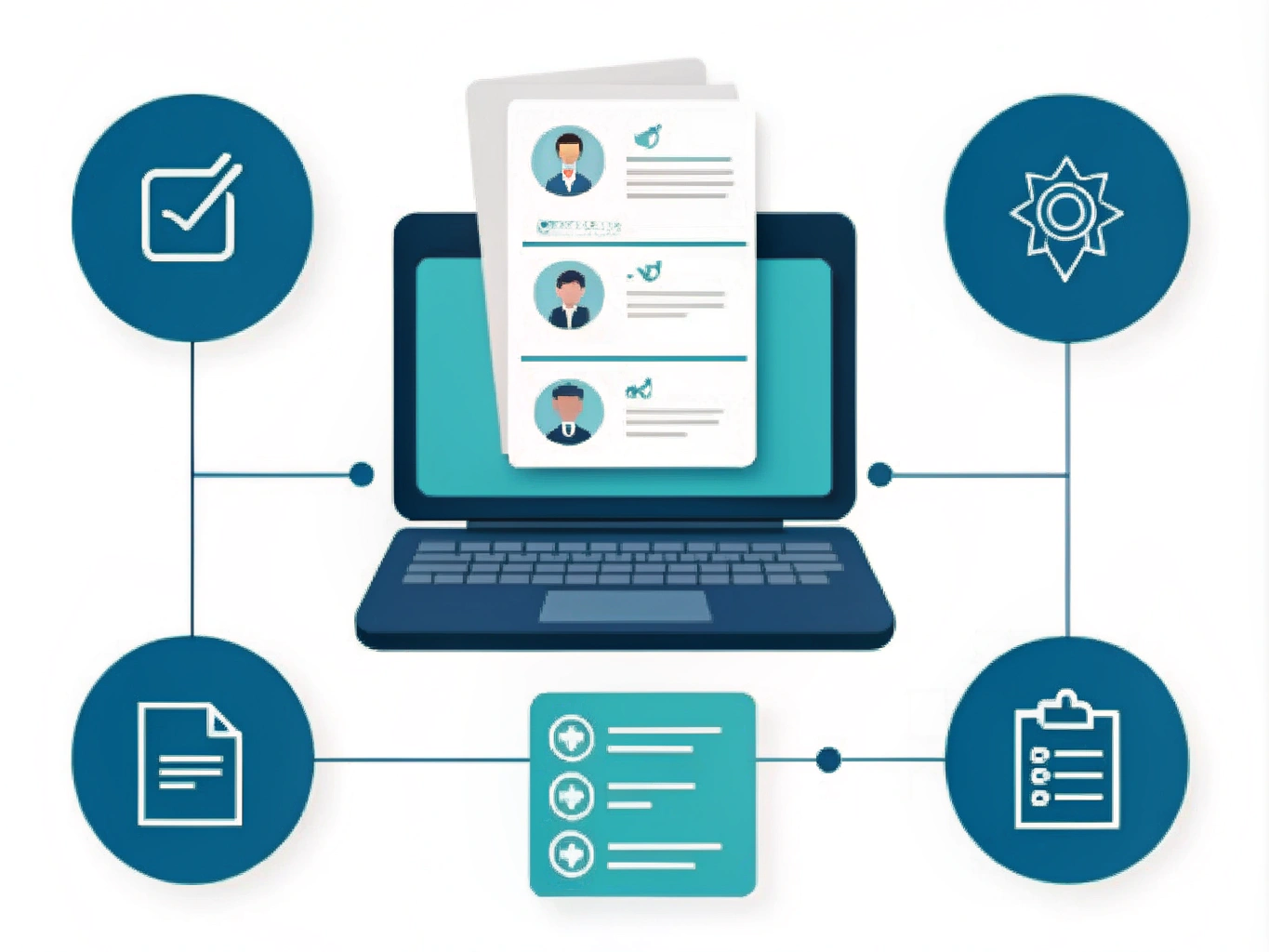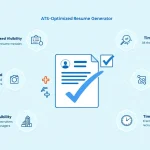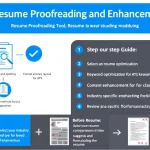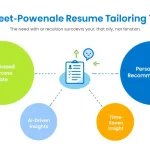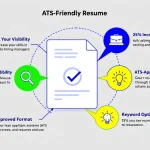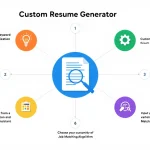Customizable IT Resume Generator
Is this tool helpful?
How to Use the IT Resume Tailoring Tool Effectively
Follow these steps to create an ATS-optimized, targeted IT resume that reflects your unique background and skills.
-
Experience Background: Write a concise summary of your professional history and expertise. Examples:
- “Cybersecurity professional with 5 years managing cloud security and compliance for financial services.”
- “IT infrastructure specialist with experience in network design and server administration at global enterprises.”
-
Certifications and Education: Enter your relevant qualifications to underscore your expertise. Examples:
- “Certified Ethical Hacker (CEH), AWS Solutions Architect Associate; Bachelor’s in Information Technology”
- “Microsoft Certified: Azure Administrator, GIAC Security Essentials; Associate degree in Network Administration”
-
Current and Past Job Roles: Describe your present and previous job titles and responsibilities. Examples:
- “Current: Cloud Security Engineer at IBM; Past: IT Support Specialist at a mid-sized software company”
- “Current: Cyber Defense Analyst at a major telecom; Past: Junior Systems Engineer”
-
Skills to Highlight: List the technical skills most relevant to your target positions. Examples:
- “Firewall configuration, incident response, vulnerability management, Python scripting”
- “Virtualization, container orchestration (Kubernetes), network automation, cloud infrastructure”
-
Keywords for ATS Optimization: Add specific keywords that match job listings and improve ATS ranking. Examples:
- “DevOps Engineer, Cloud Security Specialist, IT Compliance Analyst”
- “Network Security Specialist, Infrastructure Engineer, Systems Analyst”
-
Target Job Title: Specify the role you want to pursue to guide the resume focus. Examples:
- “Cloud Security Consultant”
- “IT Infrastructure Manager”
-
Leadership and Project Management Experience: Summarize any leadership roles or projects you have led. Examples:
- “Managed cross-team collaboration during a large-scale cloud migration initiative.”
- “Led a team of 8 IT specialists to implement enterprise-wide security upgrades.”
-
Recession-Proof Strategy: Describe approaches you’ve taken to maintain career stability during economic shifts. Examples:
- “Diversified skills by gaining certifications in cloud security and data analytics.”
- “Built a freelance consulting practice that supplements full-time employment.”
Once you complete all required fields, click the generate button to receive a tailored resume aligned to your target IT job.
Introducing the IT Resume Tailoring Tool: Definition, Purpose, and Benefits
The IT Resume Tailoring Tool streamlines creating customized resumes designed specifically for IT professionals seeking to improve their chances in competitive job markets. It automatically aligns your experience, certifications, skills, and job targets to produce resumes optimized for Applicant Tracking Systems (ATS).
What Does This Tool Do?
The tool collects detailed information about your IT career, including military experience, certifications, and technical skills, then crafts a resume that highlights your strengths in a format that ATS and recruiters favor.
Key Benefits
- ATS Optimization: Includes relevant keywords and job-specific terms to pass electronic filters.
- Customized for IT Roles: Tailors content based on your unique background and target positions.
- Time-efficient: Simplifies the resume creation process so you can focus on applying to more jobs.
- Professional Formatting: Presents your qualifications clearly to meet industry standards.
- Up-to-date Content: Reflects current IT trends and employer expectations.
Practical Usage: Real-World Applications of the IT Resume Tailoring Tool
Use Case 1: Career Transition Within IT
Mark worked as a Systems Analyst and wants to become a Security Operations Center (SOC) Analyst. By using the tool, he highlights his transferable skills and obtains a resume tailored for cybersecurity positions.
- Emphasizes experience with system monitoring and incident documentation.
- Includes certifications like CompTIA Security+ and CEH.
- Incorporates keywords such as “SIEM,” “incident response,” and “threat detection.”
- Features projects on vulnerability scanning and security policy implementation.
Mark’s tailored resume attracts multiple interview requests for SOC roles.
Use Case 2: Recent IT Graduate Entering the Job Market
Emily just graduated with a degree in Computer Science. She uses this tool to create a resume that highlights her academic achievements, internships, and skills relevant to entry-level IT jobs.
- Lists certifications including AWS Cloud Practitioner and Cisco Networking Fundamentals.
- Highlights skills such as Python, Linux administration, and cloud deployment.
- Adds keywords like “junior network engineer,” “IT support,” and “help desk.”
- Tailors the summary to emphasize eagerness to grow in IT infrastructure and support.
Using the tool helps Emily gain attention from hiring managers seeking entry-level talent.
Why Tailored Resumes Improve Your IT Job Search
1. Stand Out in Applicant Tracking Systems
Many companies rely on ATS software to screen resumes. By including specific, relevant keywords, your resume will rank higher, increasing the chance human recruiters will review it.
2. Showcase Your Most Relevant Skills
Tailoring your resume ensures the skills and experiences you highlight closely match the job requirements, making it easier for employers to see your fit.
3. Save Time and Apply to More Jobs
This tool streamlines the customization process, letting you quickly adjust your resume for each unique job opening rather than starting from scratch every time.
4. Present a Professional and Clean Format
Recruiters spend seconds scanning resumes. The tool formats your information clearly and professionally to facilitate easy review.
5. Reflect Industry Trends and Recruiting Standards
IT hiring demands evolve quickly. The tool keeps your resume aligned with current expectations, such as emphasizing cloud security or DevOps skills when relevant.
How the IT Resume Tailoring Tool Solves Common Job Search Challenges
Issue 1: Generic Resumes Fail to Capture Recruiter Attention
Generic resumes blend into piles of applications. This tool crafts job-specific resumes that highlight important details—such as specific roles you held and key accomplishments—that recruiters look for.
Example
- Instead of “IT Professional,” your resume may read “Cloud Security Engineer with Expertise in AWS and Incident Response.”
- Relevant skills and certifications are emphasized to match the job description.
Issue 2: Passing Applicant Tracking System Filters
ATS software filters out resumes without relevant keywords. This tool incorporates these keywords naturally, allowing your resume to pass initial screening.
Example
- For a DevOps Engineer, keywords could include: “CI/CD pipelines,” “Docker,” “Kubernetes,” “Ansible.”
- The tool ensures certifications like “AWS Certified DevOps Engineer” appear clearly.
Issue 3: Translating Military Experience to Civilian IT Jobs
Veterans often struggle to explain their military duties in civilian terms. This tool converts military job descriptions into clear IT language that employers easily understand.
Example
- Military: “Operated cyber defense systems under combat conditions.”
- Civilian: “Managed advanced cybersecurity platforms to protect critical infrastructure.”
- Military: “Supervised 10 personnel in communications unit.”
- Civilian: “Led a team of 10 IT specialists ensuring effective network operations.”
Issue 4: Highlighting Role-Specific Skills in a Broad IT Field
The IT field covers many specialties. This tool focuses your resume on the skills most relevant to the role you want.
Example
- For a Data Engineer role, it lists skills like “ETL processes,” “SQL database management,” and “Apache Kafka.”
- For a Network Administrator, it highlights “Cisco IOS,” “routing protocols,” and “network troubleshooting.”
Important Disclaimer
The calculations, results, and content provided by our tools are not guaranteed to be accurate, complete, or reliable. Users are responsible for verifying and interpreting the results. Our content and tools may contain errors, biases, or inconsistencies. Do not enter personal data, sensitive information, or personally identifiable information in our web forms or tools. Such data entry violates our terms of service and may result in unauthorized disclosure to third parties. We reserve the right to save inputs and outputs from our tools for the purposes of error debugging, bias identification, and performance improvement. External companies providing AI models used in our tools may also save and process data in accordance with their own policies. By using our tools, you consent to this data collection and processing. We reserve the right to limit the usage of our tools based on current usability factors.
